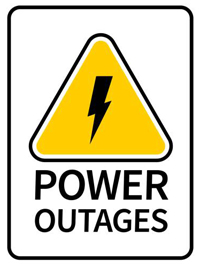UPDATE: Per Mayor Scott LeMay: At 2:17 a.m. Thursday, Feb. 18, power was restored citywide. ERCOT currently has no power shed orders in place but the emergency level remains at EEA3 which is the highest level. The grid is stable currently but we need to remain cautious due to persistent low temperatures across the state. Please be conservative in power usage at this time.
If you or your neighbors are currently experiencing outages or if you have an outage today (Feb. 18) or tonight, please contact me directly at 214-794-8904.
Because of the recent winter storm, low temperatures and power outages, everyone has now heard of ERCOT – whether they wanted to or not. One of the roles of the Electric Reliability Council of Texas (ERCOT) is to monitor the state’s electric load and tell the utility companies when the supply and demand for power are out of balance.
The role of the utility companies, one of which is Garland Power & Light, is to produce power and follow the directions of ERCOT regarding supply and demand.
During the three-day winter storm that included temperatures as low as -2 and two snow events, the demand for power greatly exceeded the supply. Consequently, ERCOT informed the utility companies, including GP&L, to reduce their power usage by a specific percentage to lower the demand.
Once the required reduction in megawatts is given to the utility companies, it is up to the utility company to determine how to meet that reduction.
“We don’t have a role in implementation because they know their areas better than we do,” Bill Magness, ERCOT CEO said. “They know what is better for their population. We just need them to commit to bring us back the number of megawatts we need to keep the grid in balance.”
There are several factors involved in the utility company’s decision about where to decrease the load. One of the main factors is critical infrastructure locations. Power cannot be cut in areas where there are facilities such as fire stations, hospitals, nursing homes, sewer treatment plants, etc. This means that if a GP&L customer’s home is in close proximity to one of these critical infrastructure locations, they will be less likely to lose power.
Magness said that ERCOT had plans in place for extreme weather conditions but that this event was beyond “normal” extreme weather.
Dan Woodfin, ERCOT’s senior director of System Operations, said that there are annual spot checks taken on the winterization steps taken by the utility companies. He added that this winter, 94 tabletop inspections had been performed. They were not performed in person because of COVID. He said that these inspections were implemented after a severe winter weather event in 2011.
There is, however, speculation about whether these inspections were done properly that is explained later in this article.
Mayor Scott LeMay said that there was no damage to any of GP&L resources from the power lines to the substations to the power plants.
“All of our systems are fully functional. What we are being subjected to is the power limitations being put on us by ERCOT,” he said.
He added that Sunday night, there were multiple power plant failures in the system, but none were at GP&L The numerous failures resulted in a domino effect of more and more failures as the situation progressed.
“From 1 a.m. until about 3 a.m., it progressed very rapidly and by the time we got to the Level 3 Emergency Alert – the highest one – to try to stabilize the power grid, they asked all producers to limit how much power they were using,” LeMay said. “They call it a shed load, which is to tell us how much power to shed (how much we have to reduce by). When we did that, the amount of power that we could produce in the city of Garland for our critical infrastructure left little to no excess power for other areas.”
He went on to explain that the reduction did not leave the choice of rolling blackouts because to do that, power would have to have been cut to one of the critical areas. Most of the power companies on the grid experienced this same dilemma.
As time has passed, GP&L has gone from having 46,000 houses without power to 15,000 last night and now to 5,400 at 12:05 a.m., Feb. 18.
Residents are understandably looking for someone to blame for the failure as it has caused untold misery and discomfort as well as damage to homes and property.
According to Magness, there were failures in every energy type – natural gas, coal, wind, solar and nuclear.
In a Feb. 16 news conference, Magness said that procedures were put in place in the winter of 2011 after a storm caused numerous power outages. Investigations were done to determine what went wrong and a decision was reached to inspect power generators annually.
 Generators shared the information with each other and developed a set of best practices. Those practices have been shared with all producers. ERCOT voluntarily performs spot checks at about 100 of 600 units to make sure they are implementing them.
Generators shared the information with each other and developed a set of best practices. Those practices have been shared with all producers. ERCOT voluntarily performs spot checks at about 100 of 600 units to make sure they are implementing them.
According to Magness, the recent extreme conditions caused problems that those practices did not prevent. They were not sufficient to keep generators online.
They also explained that the best practices are not mandatory. It is a voluntary set of guidelines.
Dr. Gerald Turner is an expert in electric grids with 40 years’ experience. He said that some of the maintenance and upkeep of the grid and components for power generation had not been done as promised in 2011.
Turner said that promises were made to update and monitor equipment better and he guessed that given the capacity that has been declining, that is what led to the disaster.
Governor Greg Abbott has already called for an investigation.


